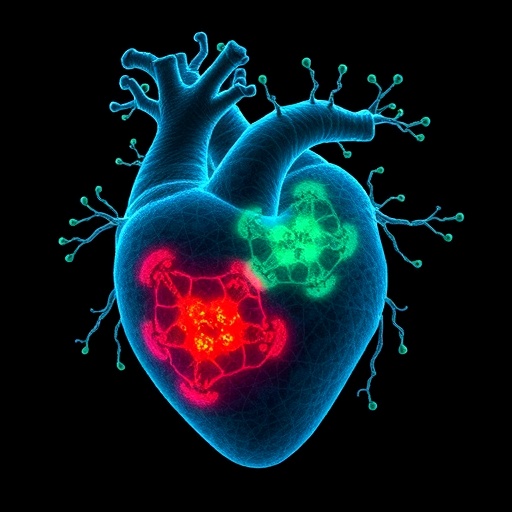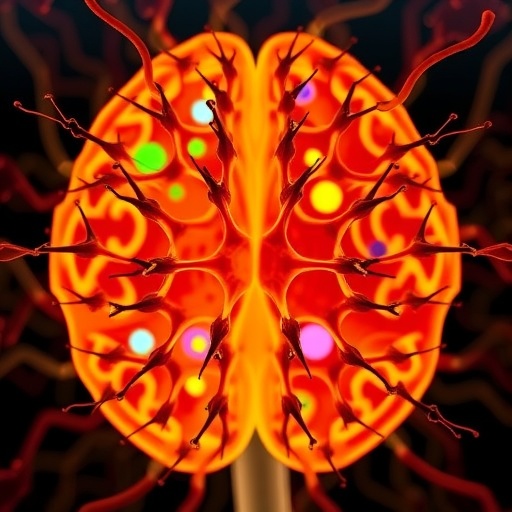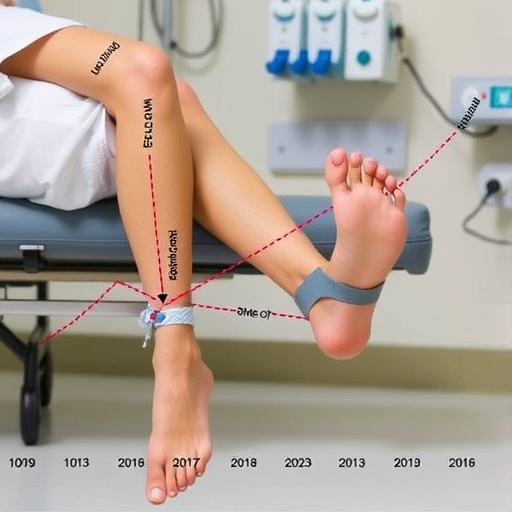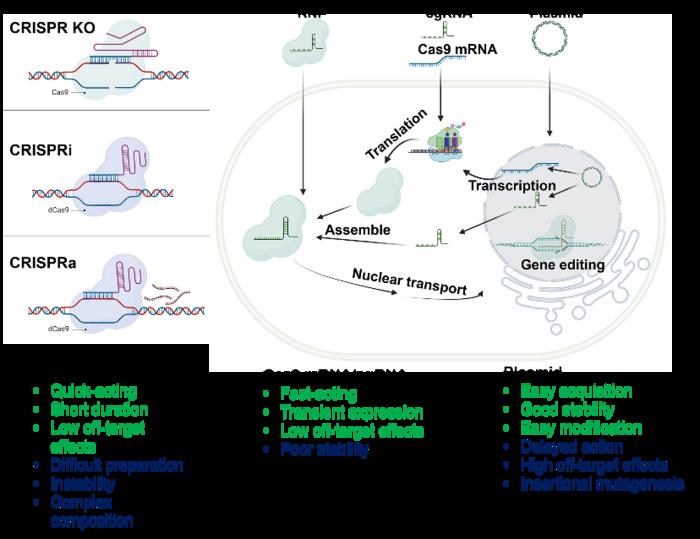Human pluripotent stem cell (hPS cell)-derived blood-generating heart-forming organoids (BG-HFOs) mark a significant advancement in our understanding of human cardiovascular and hematopoietic development. These organoids integrate the complex interplay of cardiac, hematopoietic, and endothelial tissues, thereby offering an unprecedented in vitro model that closely simulates human organ development. The implications of this research extend to various applications including disease modeling, drug testing, and the creation of advanced in vitro assays, positioning BG-HFOs as a critical tool in regenerative medicine and developmental biology.
The formation of BG-HFOs involves a meticulous protocol that spans 14 days, showcasing the intricacies of human stem cell differentiation. The method begins with the aggregation of hPS cells embedded in a supportive matrix known as Matrigel, providing a conducive environment for cell growth. This stage is pivotal as it sets the foundation for the spatial and temporal regulation of differentiation necessary for developing the multi-faceted tissues found within BG-HFOs. The role of Matrigel cannot be understated; it offers not only mechanical support but also biochemical signals that are essential for guiding stem cell fate.
Central to this protocol is the modulation of the WNT signaling pathway, a critical player in regulating both cardiac and hematopoietic lineages. By precisely controlling this pathway, researchers can drive the differentiation of hPS cells towards specific fates, enhancing the generation of both cardiac and hematoendothelial cells. This meticulous control showcases the versatility of hPS cell biology and reinforces the importance of signaling pathways in orchestrating developmental processes. Supplementation with cytokine cocktails is utilized to further facilitate hematoendothelial induction and maturation, ensuring that the organoids closely mimic native human tissue.
Once the BG-HFOs have been established, their development can be rigorously evaluated using various assessment techniques. Live-cell imaging stands out as a particularly valuable tool, allowing for real-time observation of organoid growth and cellular interactions. This technique provides insights into the dynamic processes that underpin organoid development, enriching our understanding of tissue organization and function at a cellular level. By visualizing these processes as they unfold, researchers can gather data that informs both basic science and therapeutic development.
Another critical technique employed in the analysis of BG-HFOs is whole-mount immunofluorescence (IF) staining. This method allows for the comprehensive visualization of multiple tissue types within the organoid, facilitating the assessment of specific cell populations and their spatial organization. The fluorescent markers used in IF staining enable the identification of key cellular components, providing a detailed understanding of the developmental progressions within the organoid. Coupled with flow cytometry and gene expression analysis, these methods collectively enhance our ability to dissect the complexity of BG-HFOs.
The efficient generation of BG-HFOs, while promising, necessitates a robust understanding of hPS cell culture techniques. Hands-on experience in managing these cultures is essential, particularly when balancing the various medium-enriching growth factors and small molecules required throughout the differentiation process. Mastery of these techniques can prove challenging but is crucial for the successful generation of high-quality organoids. Those embarking on this protocol will need to navigate the intricacies of stem cell biology, honing their skills in maintaining optimal culture conditions for pluripotent stem cells.
In addition to developing a reliable protocol for organoid generation, the researchers have also proposed an innovative approach to sample preparation for imaging. This novel method streamlines the preparation process, ensuring that large organoids, including those up to 4 mm in diameter, can be effectively investigated using laser microscopy. This represents a significant advancement, as traditional imaging techniques often struggle with larger organoid structures due to their complex physical properties. The ability to visualize these intricate organoid architectures is essential not only for basic research but also for potential clinical applications.
The advances made in imaging techniques underpin the substantial progress in studying BG-HFOs. The protocol described offers a fast and reproducible means of conducting whole-mount IF staining and organoid clearing, transforming how we approach the visualization of complex tissues. As researchers face challenges in visualizing larger organoids, this method holds promise for delivering high-resolution images that can reveal new insights into tissue development and function. This breakthrough is a game-changer for those dedicated to the exploration of organoid biology.
The implications for drug testing and disease modeling are immense. BG-HFOs provide a platform that closely resembles human biology, allowing for the exploration of therapeutic interventions in real time. As we refine our understanding of how these organoids respond to various stimuli, the potential for impactful translational research becomes clearer. Disease models that incorporate human tissue-derived organoids can offer insights that are fundamentally unattainable through other models, bridging the gap between basic science and clinical research.
Challenges remain, however, particularly regarding the scalability of BG-HFO production for widespread use in research and applications. Developing protocols that not only produce high-quality organoids but also can be scaled up for larger production runs will be vital. As the field continues to evolve, ongoing optimization of the differentiation protocol will be crucial to enhance consistency and reproducibility, both of which are paramount for successful research outcomes.
In conclusion, the work being done with BG-HFOs marks an exciting frontier in stem cell research and regenerative medicine. The ability to generate complex organoids that accurately represent human developmental processes opens new avenues for scientific inquiry and therapeutic exploration. As researchers build on the established protocols and continue to innovate, the possibilities for BG-HFOs will undoubtedly expand, leading to a deeper understanding of human biology and the development of novel treatment strategies.
As the demand for more advanced in vitro models grows, BG-HFOs stand out for their potential to reshape our approaches to studying human diseases. The pursuit of improving organoid technology is essential in enhancing their robustness and efficacy. Future research will benefit from further elucidation of the signaling pathways involved, optimization of cytokine supplementation, and exploration of different hPS cell lines, which could yield even greater insights into the intricacies of human organ development.
Ultimately, the progress made with BG-HFOs signifies a collaborative effort among scientists passionate about bridging gaps in our knowledge of human biology. The pursuit of understanding and nurturing the complexities of organ development will drive continued research and innovation in this field. By combining fundamental science with practical applications, BG-HFOs represent a leap forward in our quest to mimic human organ systems and improve human health outcomes.
The continuing evolution of organoid research promises not just discoveries in basic biology but applications that could positively impact patient care. The tools and techniques developed will provide a scaffold for future innovations, reinforcing the critical value of organoids as a cornerstone of modern biomedical research.
Subject of Research: Human pluripotent stem cell-derived blood-generating heart-forming organoids
Article Title: Production of human blood-generating heart-forming organoids and sample preparation for advanced imaging
Article References:
Dardano, M., Wilson, L., Zweigerdt, R. et al. Production of human blood-generating heart-forming organoids and sample preparation for advanced imaging.
Nat Protoc (2025). https://doi.org/10.1038/s41596-025-01268-z
Image Credits: AI Generated
DOI:
Keywords: Blood-generating heart-forming organoids, human pluripotent stem cells, organoid technology, tissue engineering, regenerative medicine, in vitro models, signaling pathways, drug testing, disease modeling.
Tags: advanced imaging techniques in biologyblood-generating organoids researchdisease modeling with organoidsdrug testing using organoidsheart-forming organoids developmenthematopoietic and endothelial tissue integrationhuman pluripotent stem cellsin vitro models for cardiovascular studiesMatrigel role in tissue engineeringregenerative medicine applicationsstem cell differentiation protocolsWNT signaling pathway modulation






